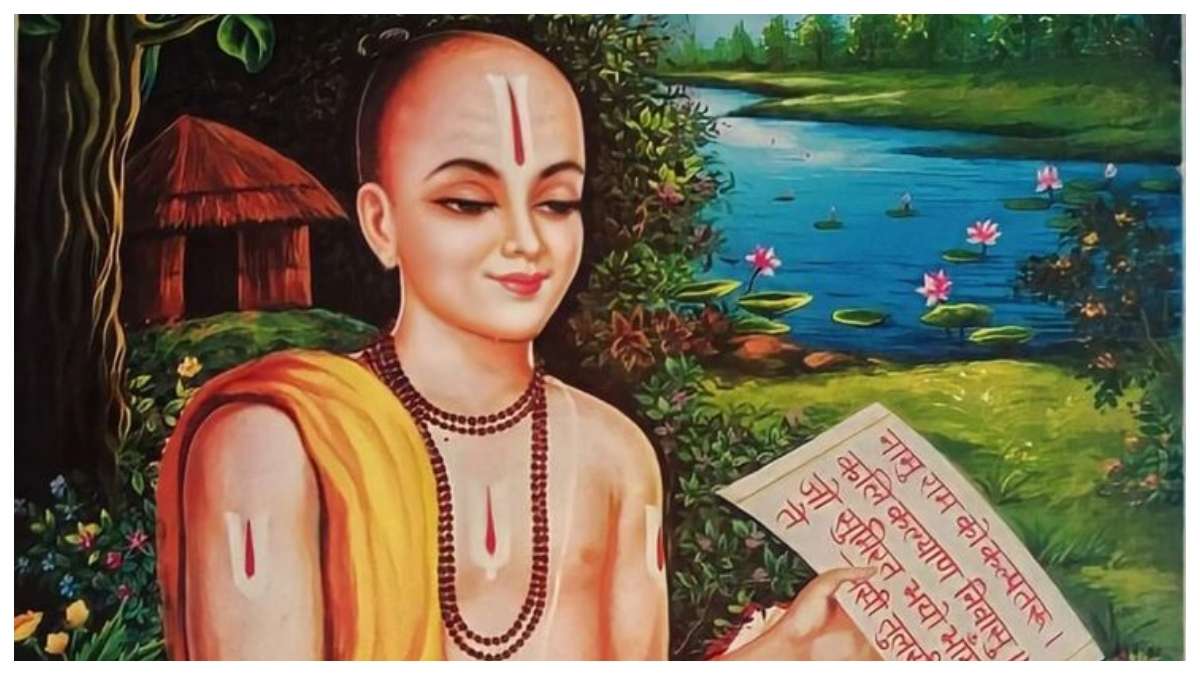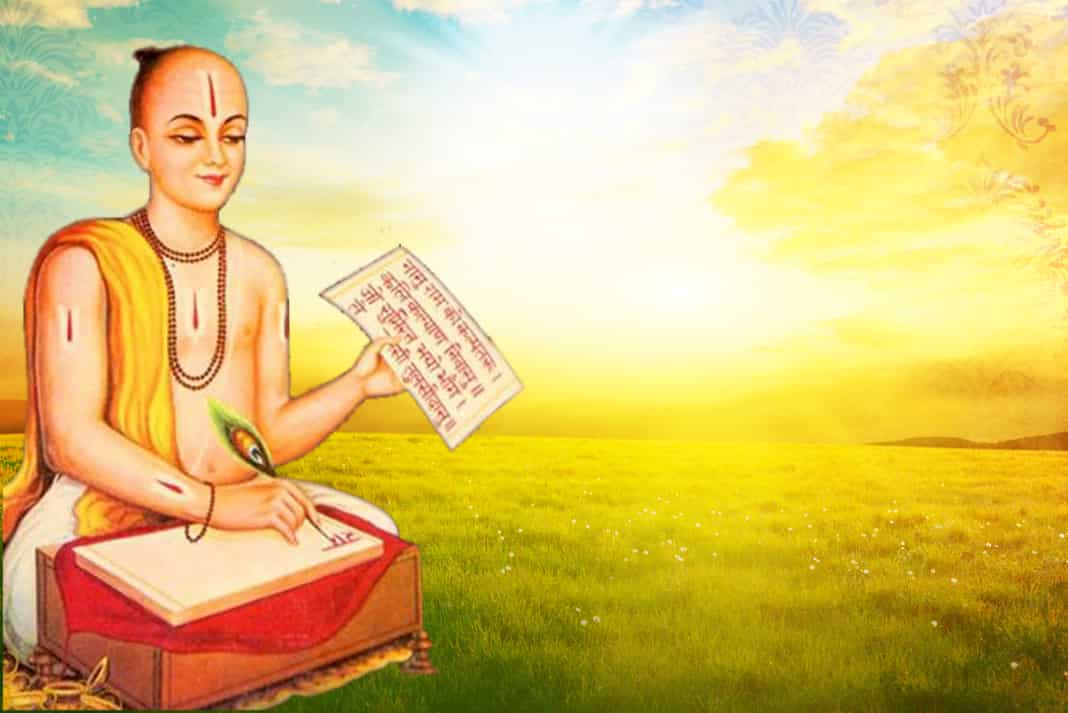Tulsidas Biography, Wikipedia, Family, Personal Life, Career, Net Worth, Death
Rambola Dubey, popularly known as Tulsidas, was a revered Vaishnava (Ramanandi) Hindu saint, poet, and philosopher, celebrated for his unwavering devotion to Lord Rama, one of the principal deities of Hinduism. Born in the 16th century, Tulsidas is best known for composing the “Ramcharitmanas”, an epic poem that retells the Sanskrit Ramayana in Awadhi, a dialect of Hindi, making the story accessible to the common people of India.
Profile
| Aspect | Details |
|---|---|
| Full Name | Rambola Dubey |
| Popular Name | Tulsidas |
| Birth | August 11, 1511 |
| Birthplace | Rajapur, Chitrakoot, Uttar Pradesh, India |
| Religious Affiliation | Hinduism (Vaishnava, Ramanandi Sampradaya) |
| Language of Writings | Awadhi, Sanskrit, Braj Bhasha |
| Philosophy | Bhakti (devotion), especially towards Lord Rama |
| Famous Works | Ramcharitmanas, Hanuman Chalisa, Vinay Patrika, Kavitavali, Dohavali |
| Main Deity Worshiped | Lord Rama |
| Spouse | Ratnavali (he later renounced worldly life after a spiritual awakening) |
| Legacy | Revived Rama bhakti; made Ramayana accessible in the vernacular |
| Death | 30 July 1623 |
| Memorial | Tulsi Ghat, Varanasi |
Early Life and Family
Tulsidas, born Rambola Dubey, was a revered Hindu poet-saint and philosopher, celebrated for his devotion to Lord Rama. He was born in Rajapur, Chitrakoot, Uttar Pradesh, India, on the seventh day of Shukla Paksha in the month of Shravana (August). His parents were Atmaram Dubey and Hulsi, and he belonged to the Saryupareen Brahmin lineage of the Parashar Gotra.
Legends surround his birth: Tulsidas reportedly remained in his mother’s womb for 12 months, was born with 32 teeth, and uttered “Rama” instead of crying, earning the name Rambola. Astrologers deemed his birth inauspicious, leading to his abandonment by his parents. A maid named Chuniya cared for him until her death when he was five and a half. Orphaned, Rambola was adopted by Narharidas, a Vaishnava ascetic of the Ramanandi sect, who renamed him Tulsidas and initiated him into spiritual life.

Tulsidas Education
Tulsidas’s spiritual and intellectual journey began under Narharidas, who narrated the Ramayana to him multiple times, igniting his devotion to Rama. At age seven, his sacred thread ceremony (Upanayana) was performed in Ayodhya. He later moved to Varanasi at 15–16, studying under Guru Shesha Sanatana at Panchaganga Ghat. There, he mastered Sanskrit grammar, the four Vedas, six Vedangas, Jyotisha, and Hindu philosophy over 15–16 years. After completing his studies, he returned to Rajapur, where he began narrating the Ramayana.
Tulsidas Personal Life
Details about Tulsidas’s personal life are debated. Some sources claim he was an ascetic from childhood, never marrying, as affirmed in his own works like Hanuman Bahuk. Others suggest he married Ratnavali, daughter of Dinbandhu Pathak, in 1583, and had a son, Tarak, who died young. A popular legend recounts Tulsidas’s deep attachment to Ratnavali. When she visited her father’s home without informing him, he swam across the Yamuna River at night to see her.
Ratnavali rebuked him, saying, “If you had half this devotion for Rama, you would be redeemed.” This profoundly impacted Tulsidas, leading him to renounce family life, become a sadhu, and dedicate himself to Rama. He then traveled across India, visiting sacred sites like Badrinath, Dwarka, Puri, and Rameshwaram, before settling in Varanasi.
Tulsidas Career and Literary Contributions
He is one of the greatest poets in Hindi, Indian, and world literature, renowned for his contributions to the Bhakti movement. His magnum opus, Ramcharitmanas, written in Awadhi between 1574 and 1577, is a retelling of Valmiki’s Ramayana. Composed in Ayodhya, it consists of seven cantos and 12,800 lines, blending devotion, storytelling, and spiritual wisdom.
Its accessibility in the vernacular made Rama’s story available to the masses, earning it reverence in Hindu households. Tulsidas is also credited with composing the Hanuman Chalisa, a 40-verse hymn praising Hanuman, widely recited for spiritual protection.
Other notable works include:
-
Vinaya Patrika: A collection of devotional hymns.
-
Dohavali: 573 miscellaneous dohas and sorthas in Awadhi and Braj.
-
Kavitavali: Poems in the Braj dialect.
-
Gitavali, Krishna Gitavali, Parvati Mangal, Janaki Mangal, Ramlala Nahachhu, Barvai Ramayana, Ramagya Prashna, Vairagya Sandipani, Hanuman Bahuk, Hanuman Ashtak, and Tulsi Satsai.
His works emphasize bhakti (devotion), righteousness, and surrender to the divine. He founded the Sankat Mochan Hanuman Temple in Varanasi and initiated the Ramlila plays, folk-theatre adaptations of the Ramayana, which remain integral to Indian culture. His poetry has influenced Hindustani classical music, popular music, and television series.

Tulsidas Net Worth
As a saint and ascetic, He renounced material wealth, living a life of simplicity and devotion. There are no records of personal possessions or wealth, as his focus was spiritual. He distributed his belongings to the poor, as illustrated in a story where Lord Rama protected his ashram from thieves, prompting Tulsidas to give away his goods.
Tulsidas Death
His health declined in his later years, and he passed away on 30 July 1623 at Asi Ghat, Varanasi, at age 91. He was cremated by the Ganges. His legacy endures through his literary and spiritual contributions.
Legacy
He is regarded as an incarnation of Valmiki, the original Ramayana author, a belief supported by the Bhavishyottar Purana. His works have shaped Indian culture, promoting devotion and moral values. The Ramcharitmanas remains a spiritual and literary cornerstone, and his dohas are proverbial in Hindi-speaking regions. Tulsidas’s influence transcends time, inspiring generations through his poetry and devotion to Rama.
READ ALSO: Suraj Nambiar Biography, Wikipedia, Family, Wife, Career, Net Worth, Cars
FAQs
Who was Tulsidas?
Tulsidas was a 16th-century Hindu poet-saint, philosopher, and devotee of Lord Rama, best known for writing Ramcharitmanas and Hanuman Chalisa.
Where was Tulsidas born?
He was born in Rajapur, Chitrakoot, Uttar Pradesh.
What is Tulsidas’s most famous work?
His most famous work is Ramcharitmanas, an Awadhi retelling of the Ramayana.
Did Tulsidas marry?
Some sources claim he married Ratnavali and had a son, Tarak, but others assert he was a lifelong ascetic. He renounced family life to become a sadhu.
What is the significance of Hanuman Chalisa?
The Hanuman Chalisa is a 40-verse hymn praising Hanuman, believed to offer spiritual protection and strength to devotees.
Where did Tulsidas die?
Tulsidas died in Varanasi at Asi Ghat in July–August 1623.
How did Tulsidas contribute to Indian culture?
He popularized the Ramayana through Ramcharitmanas, founded the Sankat Mochan Hanuman Temple, and initiated Ramlila plays, influencing literature, music, and theatre.



